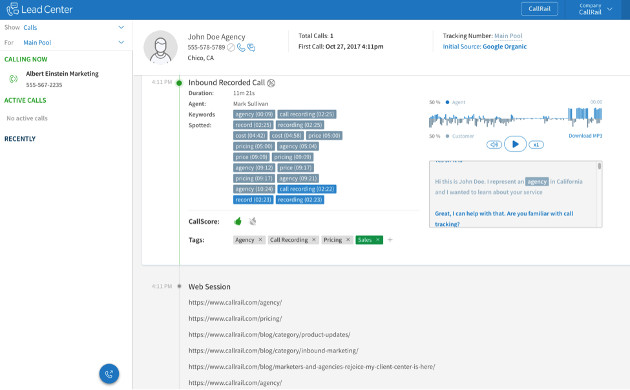Marketing Artists + Attribution Data = Highly Coveted Marketers
No matter your familiarity with marketing attribution, if you work in any marketing role today you know what the ultimate goal of your efforts is... to grow the business.
For all the complexity of modern marketing, there are really only three ways to grow: customer acquisition, customer retention, and customer upselling. Success in each of those boils down to how good we are at the art of persuasion.
As marketers, we're all artists, and our currency is persuasion. But to become among the most sought-after, elite marketers in the world, we must know what actually persuades. And for that we must understand—and intelligently apply—attribution.
In my 12+ years as a marketer, I've seen firsthand how marketing attribution transforms careers and businesses. It is the rocket fuel marketers need to take us to the next level. Keep reading, and I'll tell you three things you need to figure out so you can start playing with rocket fuel.
Note: If you're work in PPC marketing, I highly recommend tuning into our Pro Webinar series, where we often go over tips and tricks for how to track AdWords ROI using attribution modeling.
First: Two Concepts You Need to Wrap Your Head Around
There is a slew of intelligent, thoughtfully written pieces on the science of attribution. I recommend doing your own research for your role/business/market. But don't dive into all that before understanding the two foundational concepts of all attribution marketing: Without a basic understanding of multitouch attribution and multichannel attribution, you will quickly get overwhelmed. Here's a quick overview to get you started.
Often used interchangeably, multichannel and multitouch attribution methods are distinct in subtle, yet important, ways:
• Multichannel attribution uses channel data about how someone arrives at your stuff to divvy up credit for a conversion. It assigns fractional credit to the multiple channels (SEO, PPC, social, radio, etc.) by which someone arrives at your stuff along the path to a conversion.
• On the other hand, multitouch attribution uses touchpoint data to assign credit for a conversion. It gives credit to touchpoints that preceded conversions. Tracking touchpoints is much more comprehensive, yields a deeper understanding of the chronology of interactions that lead to conversions, sheds light on what content is most effective, and includes all the channel data for each touchpoint.
(I highly recommend reading this post, where I dive into more detail on the superiority of multitouch attribution.)
Second: Which Attribution Method to Start With, and What Comes Next
Both attribution methods are useful for different scenarios, but you should begin with multichannel attribution. It's easy to get set up, and it will quickly get you on the road to thinking more critically about what channels are influencing conversions. Whet your attribution appetite by setting up your conversions and using Google Analytics' Multi-Channel Funnel Reports.
As you get more advanced, you'll begin to see where multichannel attribution falls short. It ignores certain data about the actual interactions (touchpoints) in favor of focusing on how they arrived at your stuff. Out of the box, it also gives zero credit to view-through impression touchpoints from display advertising and social media that precede conversions.
Without diving into all the touchpoint data (what pages were visited during a session, what was said during a call conversion, etc.), you're missing critical information that can help you pour fuel on the exact conversion paths of your ideal customers.
Determining which touchpoints in your funnel to track can be a challenge, but I recommend starting off simple, with two milestones on the customer journey: the "First Touch" and the "Lead Capture Touch." Keep in mind that both these milestones can occur at the same time.
Below is just a peek at the incredible insights multitouch attribution data can give you for a simple phone call conversion (a lead-capture touchpoint). In the screenshot (from CallRail's Lead Center), you can see that the referring channel was organic search, keywords that were mentioned on the phone call, and the product pages visited directly preceding the phone call. (Just tap or click on the image to see a larger version.)
Third: Attribution Modeling—Don't Let Perfect Be the Enemy of Good
The final area you need to dive into is attribution modeling. At its simplest, attribution modeling uses multichannel and multitouch attribution data to determine how much credit each channel or touchpoint should receive for a conversion. Which model is best for your organization really depends on the most important milestones in your funnel, but here are the basics to get you started.
Most marketers use the default model of the tool used for reporting. In Google Analytics, for example, the default is "Last Non-Direct Click," which gives 100% credit for conversions to the last nondirect channel preceding the conversion. For direct website visitors that have no previous nondirect channel, direct would get the credit. In Google AdWords the default attribution model for conversion reporting is the last AdWords click, which assigns 100% of the credit to the last click that AdWords drove before a conversion.
Though single-touch, last-click attribution models like these can provide a baseline for understanding what ultimately drove a conversion, they ignore all the other touchpoints and channels along the customer's journey.
There are other stock attribution models in Google Analytics and AdWords that divide up credit among multiple touchpoints preceding a conversion but none of them is perfect. I recommend using the Google Analytics model comparison tool to see how each attribution model doles out credit for conversions, and starting with the one that correlates strongest with what you know about your customer's path to purchase.
As you get more advanced with attribution modeling, you'll likely want to move to a custom model or a full path model. Though I expect machine-learning algorithms to be helpful in the near future for creating custom attribution models, the main thing to remember here is that none is going to be perfect. So don't let perfect attribution modeling be the enemy of good attribution modeling.
For most marketers today, any attribution model that incorporates several touchpoints is going to be enough to provide insight into how to optimize channel investment, content elaboration, and calls to action.
On the Road to Becoming an Elite Marketer
Attribution is challenging for all of us. Don't get overwhelmed by the complexity of methods or modeling. You just need to begin understanding how attribution methods and modeling work to begin putting them to use in your work.
If you do, you'll be well on the road to figuring out exactly what you're doing to persuade people to become customers, and you'll be igniting success in your career and for your company in the process.





